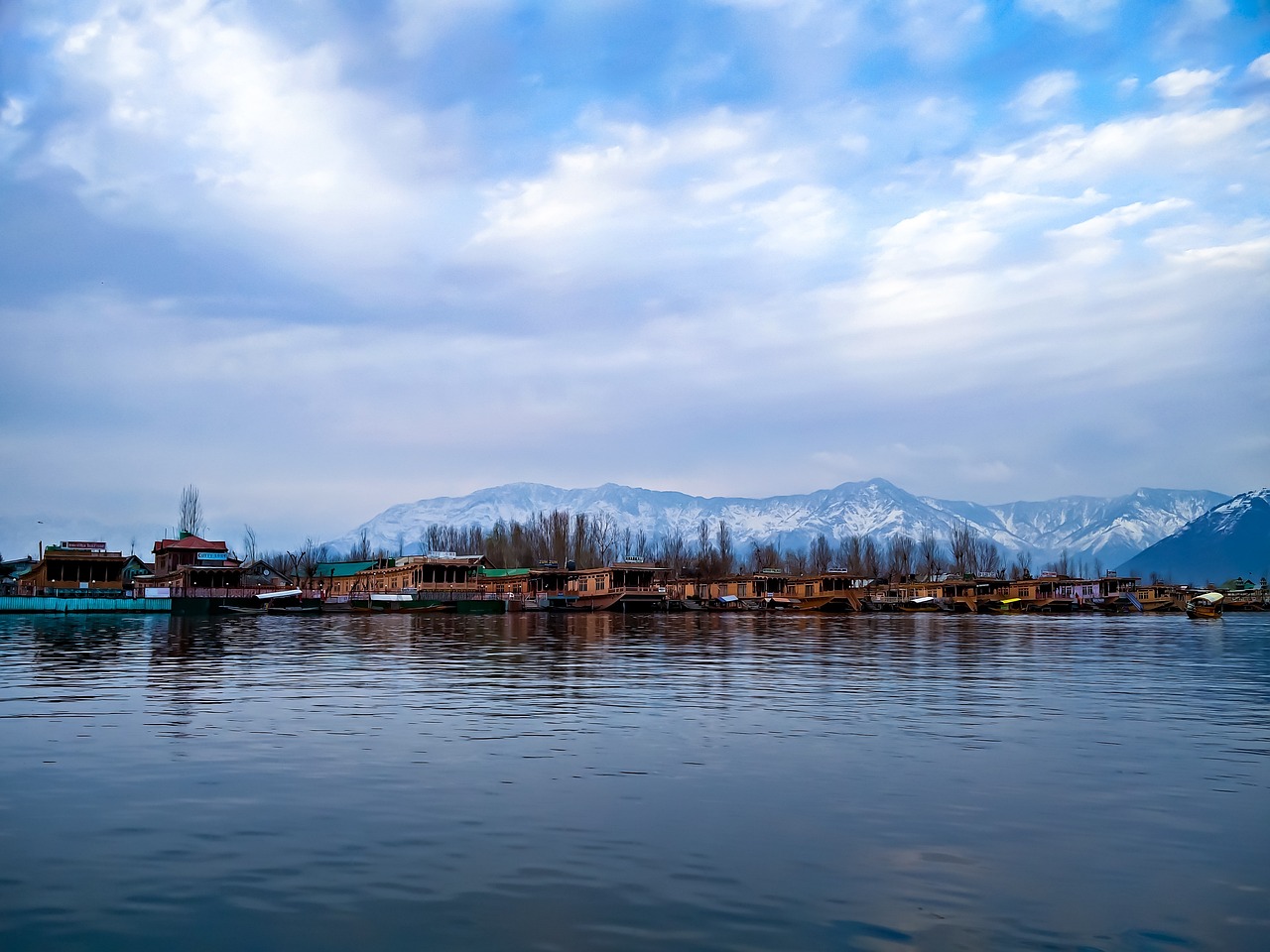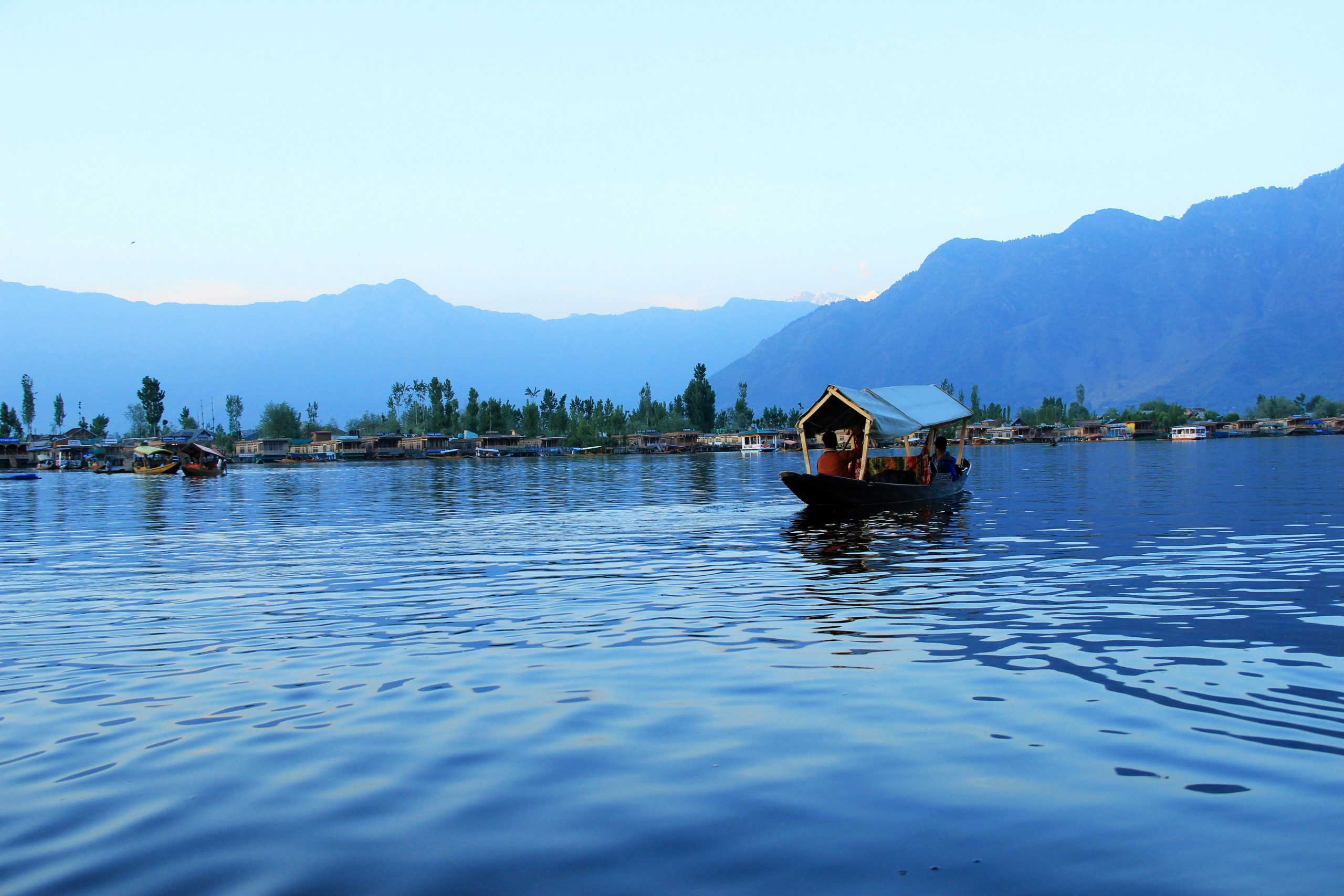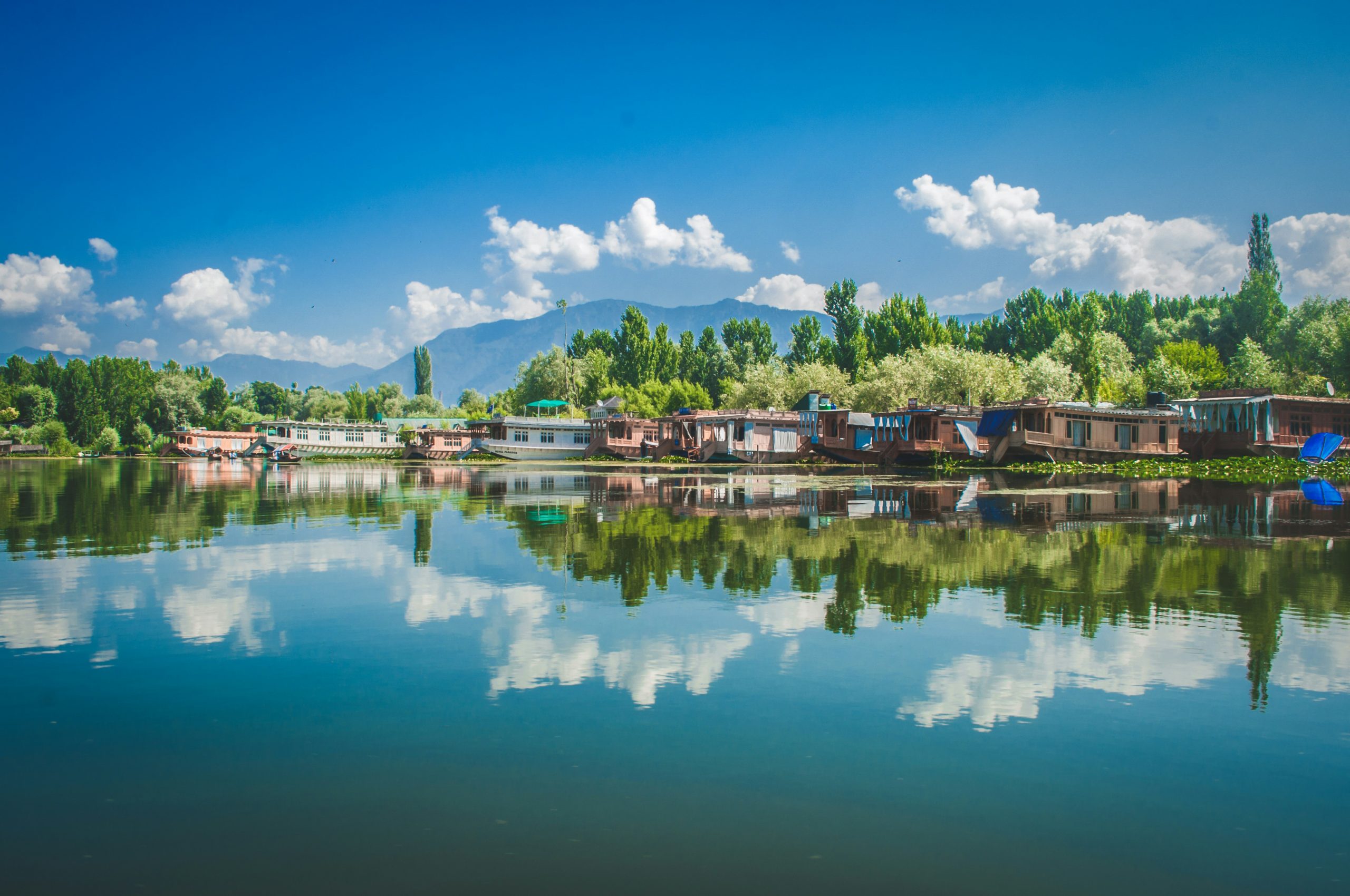Dal Lake is a lake in Srinagar, the summer capital of Jammu and Kashmir. The urban lake, which is the second largest in the state, is integral to tourism and recreation in Kashmir and is named the “Jewel in the crown of Kashmir” or “Srinagar’s Jewel”. The lake is also an important source for commercial operations in fishing and water plant harvesting. The shore line of the lake, is about 15.5 kilometres (9.6 mi), is encompassed by a boulevard lined with Mughal era gardens, parks, houseboats and hotels. Scenic views of the lake can be witnessed from the shore line Mughal gardens, such as Shalimar Bagh and Nishat Bagh built during the reign of Mughal Emperor Jahangir and from houseboats cruising along the lake in the colourful shikaras. During the winter season, the temperature sometimes reaches -11 °C (12 °F), freezing the lake. The lake covers an area of 18 square kilometres (6.9 sq mi) and is part of a natural wetland which covers 21.1 square kilometres (8.1 sq mi), including its floating gardens. The floating gardens, known as “Rad” in Kashmiri, blossom with lotus flowers during July and August. The wetland is divided by causeways into four basins; Gagribal, Lokut Dal, Bod Dal and Nagin (although Nagin is also considered as an independent lake). Lokut-dal and Bod-dal each have an island in the centre, known as Rup Lank (or Char Chinari) and Sona Lank respectively. At present, the Dal Lake and its Mughal gardens, Shalimar Bagh and the Nishat Bagh on its periphery are undergoing intensive restoration measures to fully address the serious eutrophication problems experienced by the lake. Massive investments of approximately US$275 million are being made by the Government of India to restore the lake to its original splendour. Dal is mentioned as Mahasarit in ancient Sanskrit texts. Ancient history records mention that a village named Isabar to the east of Dal was the residence of goddess Durga.[citation needed] This place was known as Sureshwari on the bank of the lake, which was sourced by a spring called the Satadhara. During the Mughal period, the Mughal rulers of India designated Kashmir, Srinagar in particular, as their summer resort. They developed the precincts of the Dal in Srinagar with sprawling Mughal-type gardens and pavilions as pleasure resorts to enjoy the salubrious cool climate. After the death of Aurangzeb in 1707, which led to the disintegration of the Mughal Empire, Pashtun tribes in the area around the lake and city increased, and the Durrani Empire ruled the city for several decades. In 1814 a significant part of the Kashmir valley, including Srinagar, was annexed by Raja Ranjit Singh to his kingdom, and the Sikhs grew in influence in the region for 27 years. During the British Raj, the British also made Srinagar their capital during the summer months, attracted by the cool climate of the Kashmir valley, amidst the back drop of the majestic snow covered Himalayan ranges. The lake precincts experience temperatures in the range of 1–11 °C (34–52 °F) during winter and 12–30 °C (54–86 °F) during the summer season. The lake freezes when temperatures drop to about -11 °C (12 °F) during severe winter. Although the Dogra Maharaja of Kashmir restricted the building of houses in the valley, the British circumvented this rule by commissioning lavish houseboats to be built on the Dal. The houseboats have been referred to as, “each one a little piece of England afloat on Dal.” After the independence of India, the Kashmiri Hanji people have built, owned and maintained these houseboats, cultivating floating gardens and producing commodities for the market, making them the centre of their livelihoods. The houseboats, closely associated with Dal also provide accommodation in Srinagar. Following the Mughal and British rule, the place has earned the epithet, “Jewel in the crown of Kashmir”. Houseboats and the Dal are widely associated with Srinigar and are nicknamed “floating palaces”, built according to British customs. The houseboats are generally made from local cedar-wood and measure 24–38 metres (79–125 ft) in length and 3–6 metres (9.8–19.7 ft) in width and are graded in a similar fashion to hotels according to level of comfort. Many of them have lavishly furnished rooms, with verandas and a terrace to serve as a sun-deck or to serve evening cocktails. They are mainly moored along the western periphery of the lake, close to the lakeside boulevard in the vicinity of the Dal gate and on small islands in the lake. They are anchored individually, with interconnecting bridges providing access from one boat to the other. The kitchen-boat is annexed to the main houseboat, which also serves as residence of the boatkeeper and his family. Each houseboat has an exclusive shikara for ferrying guests to the shore. A shikara is small paddled taxi boat, often about 15 feet (4.6 m) long) and made of wood with a canopy and a spade shaped bottom. It is the cultural symbol of Kashmir and is used not only for ferrying visitors but is also used for the vending of fruits, vegetables and flowers and for the fishing and harvesting of aquatic vegetation. All gardens in the lake periphery and houseboats anchored in the lake are approachable through shikaras. The boats are often navigated by two boatmen dressed in “Phiron” (traditional dress) and carry ‘Kangris’ or portable heaters on the boat. A shikara can seat about six people and have heavily cushioned seats and backrests to provide comfort in Mughul style. All houseboat owners provide shikara transport to their house guests free of charge. The shikara is also used to provide for other sightseeing locations in the valley, notably a cruise along the Jhelum River, offering scenic views of the Pir Panjal mountains and passing through the famous seven bridges and the backwaters en route. Dal lies in heart of the Srinagar city and is well connected by road and air links. The nearest airport, which connects with other major cities in the country, is about 7 kilometres (4.3 mi) away at Badgam. The nearest railway station is 300 kilometres (190 mi) away at Jammu. The National Highway NH1A connects the Kashmir valley with rest of the country. Shikaras provide a water taxi service available to see the sights in the Dal and to approach the houseboats moored on the lake periphery.
Gallery



